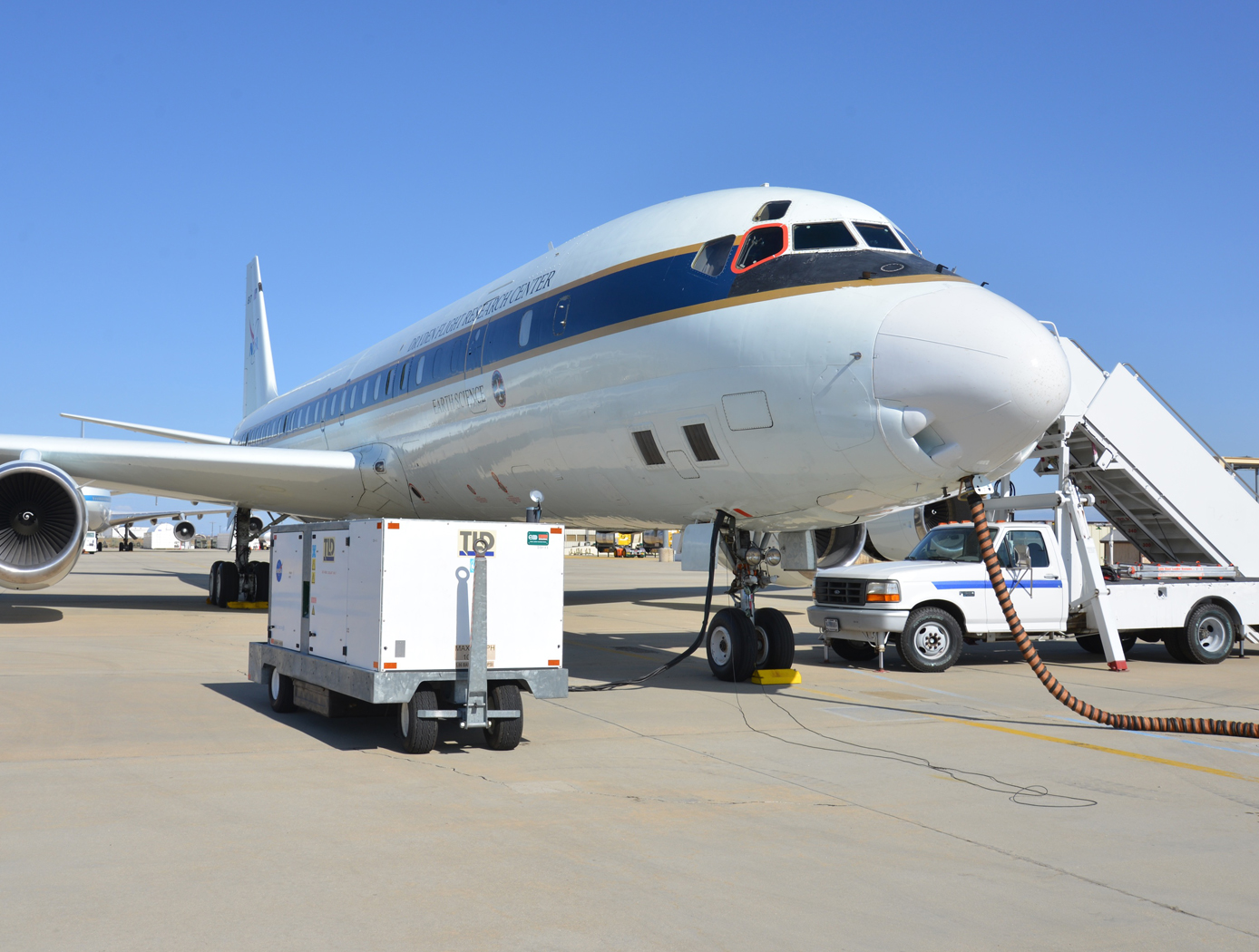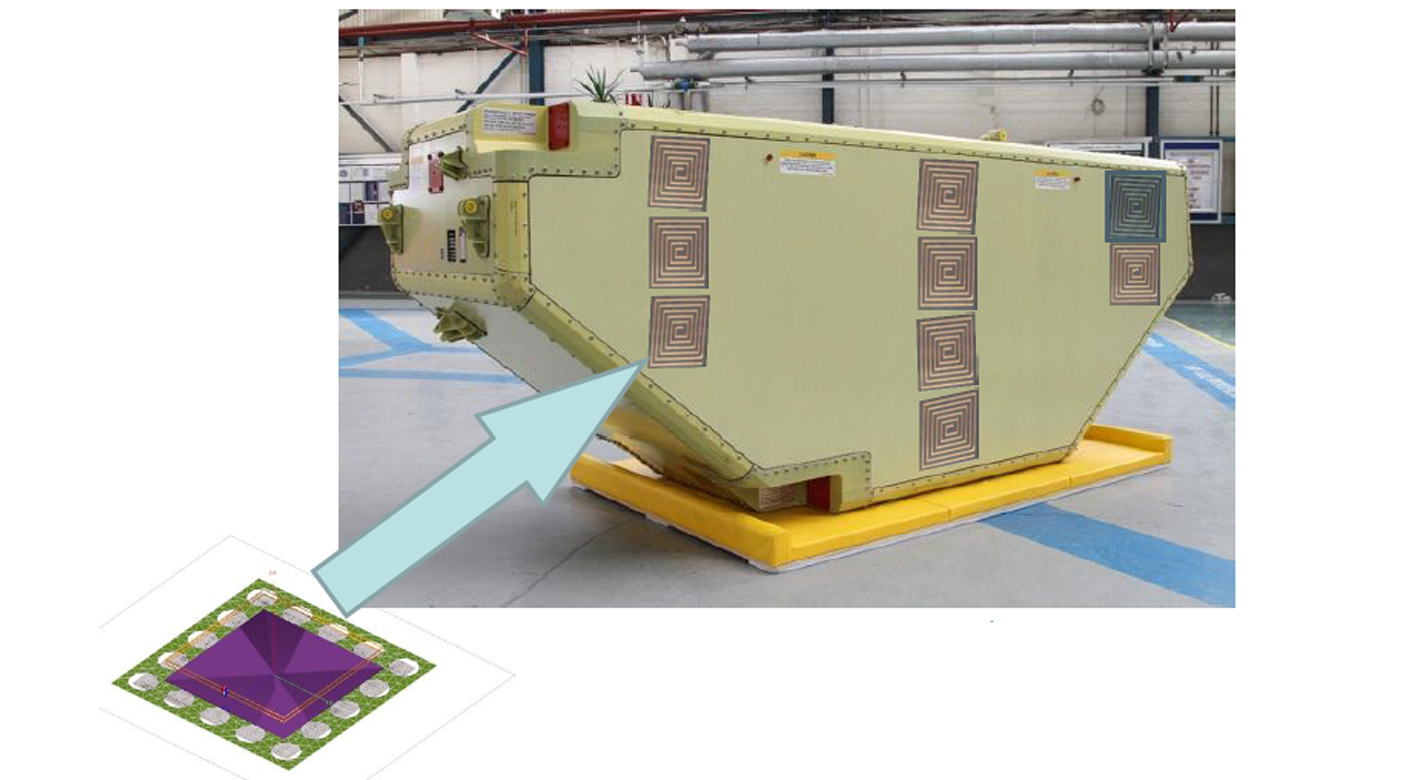Highly Accurate Level Sensor
sensors
Highly Accurate Level Sensor (LAR-TOPS-127)
For aerospace fuel tanks
Overview
NASA's Langley Research Center has developed a SansEC
Sensor Technology for use with aerospace fuel delivery systems.
The SansEC technology is a patented and proven platform
for multiple applications, including fluid level measurement.
The platform utilizes a flat coil geometry antenna operated
at its resonant frequency to measure dielectric properties
or property changes of materials near the coil.
The technology is well-suited for situations where
wireless, powerless, or non-contact measurements
are needed with high sensitivity and accuracy.
NASA Langley Research Center is seeking industrial partners/
licensees to commercialize this technology. The research team
at NASA Langley is available to assist with further development.
The Technology
The FAA and Aircraft Industry recognize the need to reduce fuel tank explosion risk
by eliminating ignition sources and changing fuel tank design and maintenance.
This technology can be utilized to wirelessly sense the level of fuel in aircrafts, thus
mitigating risk of inadvertent electrical failures and sparks. NO wires enter the fuel
tank and the radio frequency transponder typically requires 10 milliwatts of power or
less.
The technology can be used for dielectric tanks, by simply applying the sensors to the
tank surface (as pictured). Through certain techniques the technology can be applied
on metal tanks with no wires entering the tank from the outside.
Currently, there are more than 20,910 jet aircraft in service. This presents a large
market opportunity for retrofitting this technology onto existing airplane fuel tanks
Rapidly evolving aviation services are expected to spur worldwide requirement for
36,770 new jet aircraft by 2033. This presents a growing market for new installations.


Benefits
- Sensor is low cost, wireless, and offers design flexibility
- Requires only a simple and inexpensive radio frequency transponder
- Sensing can be accomplished without any electrical or direct physical contact with the coil
- Eliminates direct wire ingress into the tank
- Sensor can simultaneously detect hazardous gas fumes when coated with the appropriate chemically sensitive material
Applications
- Fuel and other liquid measurements in aerospace vehicles
- Above or below ground fuel storage tanks
- Cryogenic fluid tanks
|
Tags:
|
Similar Results

SansEC Spectroscopy
This technology is a method of identifying material anomalies and defects on or within a material by observing and quantifying how a localized change in either conductivity, permeability or permittivity changes the responding electric field and magnetic fields. This approach has many advantages over typical spectroscopy methods, particularly because typical methods only measure changes in the electric field.
This advancement will allow for potentially deeper detection of a material's abnormalities/defects (including subsurface measurements) with limited electrical requirements. The technology has applications as diverse as medical oncology screenings or surface measurements of aeronautic skins.
Another promising application is bore hole geological spectroscopy. In such an application, an array of sensors could be embedded into bore hole drills for exploratory deep wells. As the drill tooling slides past the bore hole wall, spectroscopic sampling of the side walls reveals important dielectric property information that is highly useful to prospectors and geologists in determining the probability of specific resources that may exist in the subterranean geology.

Lightning Mitigation and Damage Detection
The NASA technology can be used to protect tall structures from lightning strike damage. When a lightning leader propagates through the atmosphere in the vicinity of a tall structure, the lightning electromagnetic emissions generated from the moving electrical charge will impinge upon the tall structure before the actual charge attaches. As the lightning leader propagates closer to the tall structure, the radiated emissions at the tall structure will grow stronger. The SansEC sensor is designed to operate within the lightning radiated emission spectrum and thus is passively powered by the external oscillating magnetic field from the lightning itself. The sensor will resonate and generate its own oscillating magnetic and electric fields which have been demonstrated to influence lighting attachment and propagation.

Wireless Electrical Devices Using Floating Electrodes
The technology presents a fundamental change in the way electrical devices are designed, using an open circuit in conjunction with a floating electrode, or an electrically conductive object not connected to anything by wires, and powered through a wireless device. This system uses inductor-capacitor thin-film open circuit technology. It consists of a uniquely designed, electrically conductive geometric pattern that stores energy in both electric and magnetic fields, along with a floating electrode in proximity to the open circuit. When wirelessly pulsed from the handheld data acquisition system (U.S. Patent Number 7,159,774, Magnetic Field Response Measurement Acquisition System), the system becomes electrically active and develops a capacitance between the two circuit surfaces. The result is a device that acts as a parallel plate capacitor without electrical connections.
Wireless Sensor for Pharmaceutical Packaging and Monitoring Applications
The SansEC sensor is an electrically open circuit without electrical connections. Having a device without circuits eliminates a common failure source of electrical systems. It consists of a uniquely designed thin-film electrically conductive geometric pattern that stores energy in both electric and magnetic fields. When wirelessly interrogated from the portable data acquisition system, the sensor becomes electrically active and emits a wireless response. The magnetic field response attributes of frequency, amplitude, and bandwidth of the inductor correspond to the physical property states measured by the sensor. Container damage, temperature, spoilage, or substance level is detected by changes in resonant frequency read by the accompanying magnetic
field data acquisition system. A unique feature of the sensor is its ability to measure more than one physical attribute at the same time. In addition, by eliminating electrical connections, damage to any area of the sensor will not prevent it from being powered or interrogated.

Damage and Tamper Detection Sensor System
The SansEC sensor system consists of multiple pairs of inductor-capacitor sensors with no electrical connections, which are placed throughout the material being monitored for damage. The sensors are embedded in or placed directly onto the surface of the material. Strains and breaks are detected by changes in resonant frequency read by the accompanying magnetic field data acquisition system. When pulsed by a sequence of magnetic field harmonics from the acquisition system, the sensors become electrically active and emit a wireless response. The magnetic field response attributes of frequency, amplitude, and bandwidth of the inductor correspond to the physical property states measured by the sensor. The received response is correlated to calibration data to determine the physical property measurement. Because each sensor pair has its own frequency response, when damage occurs to that circuit the frequency response changes. This change identifies the damage location within the material.
A unique feature achieved by eliminating electrical connections is that damage to a single point will not prevent the sensor from being powered or interrogated. If a sensor is broken, two concentric inductively coupled sensors are created, thus identifying tamper or damage location.



